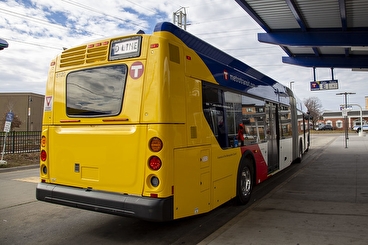Study data guides key transportation and land-use policy decisions
Annual nationwide data from the Accessibility Observatory that measures access to jobs by transit is guiding key transportation and land-use policy decisions.
“We analyzed the accessibility performance of largest U.S. metropolitan areas,” said Andrew Owen, director of the Observatory. “This new data has a range of uses and implications, especially when applied on a state and local level.”
State departments of transportation, metropolitan planning organizations and transit agencies can apply the data to performance goals related to congestion, reliability and sustainability. In addition, detailed accessibility evaluation can help in selecting between project alternatives and prioritizing investments.
This year's report presents detailed accessibility values for each of the 49 metropolitan areas. Rankings of the top 10 metro areas for job accessibility by transit in 2018 changed only slightly from the previous year, with New York, San Francisco and Chicago, respectively, again topping the list. One exception is the Washington, D.C., metro area, which dropped to sixth place from fourth, likely due to the unavailability of census data on federal workers.
Transit is used for an estimated 5 percent of commuting trips in the United States, making it the second most widely used commute mode after driving. The commute mode share of transit can be higher in individual metropolitan areas: 31 percent in the New York metropolitan area; 11 percent in Chicago; eight percent in Seattle.
Key factors affecting the rankings for any metro area include the number of jobs available and where they are located, the availability of transit service, and population size, density, and location.

